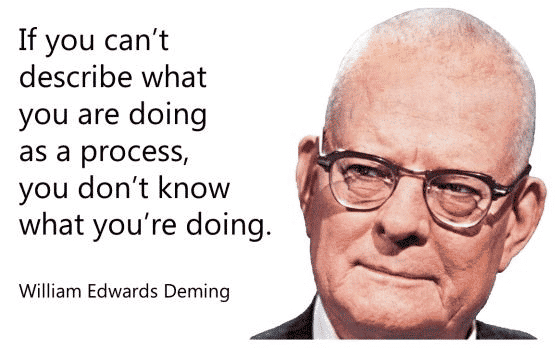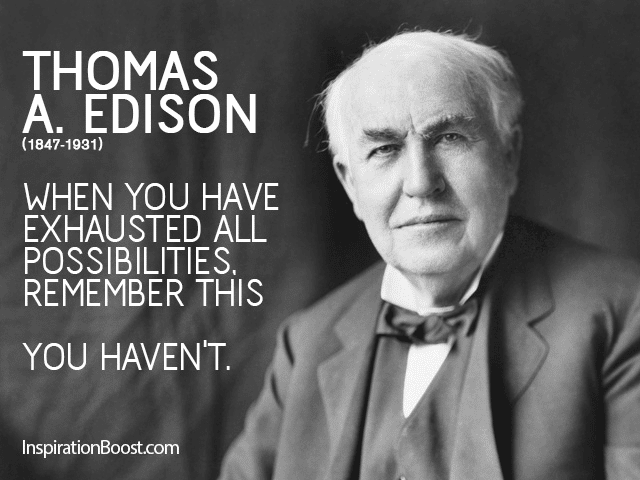
Financial Advice Pricing: 5 Questions To Ask Before Setting Up Your Pricing Capability 🙋
Successful pricing organisations, like GE, John Deere, Caterpillar, Shell, and 3M know something most businesses don’t about financial advice and pricing.
>Download Now: Free PDF How to Build Hiring Capability to Get The Best Pricing Team
They know that if the goal is to drive profitable revenue growth and more margin dollars in highly competitive and disrupted markets, they need talent pricing teams to operate within flexible organisational structures. In addition, these companies regularly seek price advice from external firms and consultancies on how to align their price, revenue models, and teams to a changing business model with new operations.
However, achieving pricing and organisational agility is much harder to do in practice. As businesses and markets change over time, employees settle into their roles. Without the right financial advice pricing, the structure seems to happen organically. Or else, pricing decisions devolve and revolve intentionally around a handful of influential individuals in the business. This article will talk about financial advice made easy.
From an outside-in perspective, it’s often hard to figure out how and why businesses act the way they do. Yet, from an inside-out perspective, we become used to things over time. Why? Because it is human nature to grow comfortable with familiarity.
With the lack of dedicated financial advisors, we question the way we do things less and less. “It’s just how we do things around here.” “This structure worked in the past.” “There’s nothing wrong with our pricing.”
When everything seems to be going well (i.e., predictably) we believe the need for external financial advice pricing is low. Our organisations continue to operate, business gets done, we make sales, people continue to buy, and things roll on.
But all of a sudden, a new trend, shift in the market or threat strikes the business. Then, everyone realises it’s not possible to succeed with their current structures. A handful of managers and executives may realise the business would benefit from price advice to control margin pressure. However, many firms suffer in silence and still operate in dysfunctional systems.
Admittedly, it’s not easy to take objective price advice when in financial pain or distress. What’s more, integrating a new pricing team within an existing structure isn’t easy and may even fail to drive results.
Change may seem daunting and disruptive but managers should weigh up and evaluate price advice, multiple variables, and trade-offs. In business, it’s difficult when it becomes problematic with stakeholder relationships, team performance, price performance, new roles, career trajectories, and organisational functions.
Financial advice pricing can seem costly. However, the pain of inertia increases the longer you wait. Moving through the changes is inevitable – whether you want to or not.

Listed below are 5 financial advice questions in pricing to ask before beginning the process. In addition, we cover how to design, structure, and integrate a pricing team (within the business in more detail in our e-book series.)
Financial Advice Pricing QUESTION #1: When should we start the design process?
PRICE ADVICE: It’s never too early. A 1% shift in margin can equate to $1M in EBIT. In fact, it will cost you more to wait longer. Large businesses and ASX-listed businesses like BP, Winc, Wesfarmers, CSR, Repco, Toll, DHL, and Oceania have all received external price advice to move from A to B. Some of them completely re-designed their operations and systems to improve pricing capability for the next 5 years.
The manner in which you price your products or services can influence the perception of your company’s identity, as well as how you view and treat your competition and how much you respect your consumers.
A cross-functional team managing your pricing requirements on a part-time basis is not the best price advice. A project-based team structure will not be enough to generate the ROI you want. More often than not, it loses momentum.
For companies that have an annual revenue of $100M+, our advice is to install dedicated pricing and/or revenue management team to set and manage prices. The size and structure of the team are dependent on the revenue.
In the process, it’s also common to make hiring mistakes and fail to stop margin leakage. They fail to implement the right structure or processes to drive more complex pricing outcomes.
Therefore, it’s unrealistic to expect from employees with no dedicated skills or experience. These are needed to manage and set prices in light of the potential upside/size of the prize available, the complexity of product range, customers, and market segmentation.

Financial Advice Pricing QUESTION #2: Who should help us design and manage the integration of the pricing function into the business?
PRICE ADVICE: It is important to have subject matter advisers contribute additional price advice to the design process, including price advice on team structure, diversity, specialist hiring processes, talent evaluation and assessment, and software integration processes. We’ve seen several good pricing teams set up to fail.
A study published in the Journal of Financial Counseling and Planning reported that the contributions of financial counsellors to providing financial advice to clients through service activities can improve financial decision-making.

Financial Advice Pricing: Average Cost For Companies
In recent years, the cost of financial advice in Australia has risen sharply. The fees that financial advisors charge will vary depending on the type of financial advice that you require. According to recent reports, fees have risen by 40% in the last few years. The average cost of seeing a financial adviser is $3,000 per year, but rates can go much higher. This figure includes both the cost of limited advice and the cost of comprehensive continuing advice.
Still, there are other options to choose from, without having to spend a lot.
1. There are specialist firms located in regional and outer suburban areas that work with small businesses. Most of them charge a percentage-based fee from your investment performance, for instance, rather than fixed fees.
2. Others have taken advantage of the digitalisation of businesses as a cost-effective alternative. On the downside, the services will also be limited. They may provide short courses on finance and pricing, but discussions are limited to managing debt, taxes, and budgets, for instance. While other complex and personalised topics on investments are excluded.
3. Automated investment advice requires you to answer online assessments, asking about long-term financial goals. Then the system tailors your answers to recommendations from its algorithm.
The terms for financial advisors’ fees mostly change with the type of advice that they provide. If they’re in partnership with a product that they receive a commission from, they will likely highlight this in the discussion. Whereas, if the financial advice is based on your performance as a business, they will likely work more diligently for your investments to grow.
Financial Advice Pricing QUESTION #3: What’s the best way to assign the right people to the right function?
PRICE ADVICE: There are three key areas of price advice to help you assign the best people to pricing roles:
1. Don’t just rely on CVs and interviews or past success to assign people to pricing teams. Use an evidence-driven approach to back up your decisions. Don’t just use recruitment as a method to fill seats quickly.
2. If you want to know how good someone is at pricing and revenue management, get them to take our pricing and commercial assessment. Use this as a benchmark for their performance against relative industries.
3. It’s best to know if someone will be a good fit for the role beforehand. So, provide constructive advice on skills and development and a good insight into commercial pricing. They should know the challenges and outcomes that are expected in the new role.
Recruitment is a great opportunity not only to educate but to engage future employees with the role and mission of pricing in a business. Concentrate on the end result. Engage on what is accomplished rather than how the work should be done: because one’s way is not always the best way.
If possible, allow individuals to choose and formulate their own techniques and processes. This will promote success and trust.

Financial Advice Pricing QUESTION #4: What’s the best way to design a pricing function?
PRICE ADVICE: No matter how similar cross-functioning teams may appear, there are always differences. It may be in leadership, strategy, structures, operations, and capabilities. This means that it’s important to have customised price advice, function, design, and integration process suited to their own complexities and grounded in the objectives of your business.
Proven pricing frameworks, team capability, and evaluation tools help you bring these functional differences together. The organisational design approach must be flexible enough to match the unique requirements of the pricing function and business. Above all, the entire focus of the process should be on value creation.
One of the key factors that can make or break your company’s financial objectives is the price you set for your products and services. This is why a rigorous pricing design is definitely a must when you want to sell something without sacrificing a great profit margin.

Financial Advice Pricing QUESTION #5: How can we break down resistance to change and convince people?
PRICE ADVICE: Your teams and leaders are much less likely to resist changes to pricing strategy and operations when they took part in shaping it.
To start cross-functional collaboration, leaders must seek external price advice and upward feedback from sales and marketing teams. It’s best to bring up objections and address them right away. Be open to feedback, and communication, and share information in the decision-making process.
Oftentimes, sales are more welcoming of informed price advice and assistance from external consultants or pricing teams. They do resist being told what to do without a clear mandate or vision supporting the directive.
The design and integration process should help you broaden your scope. In fact, it’s about establishing a strong vision for change that teams believe in. Moreover, the change can be a great way for teams to quit operating in silos.
What is price leadership?
A price leader is a dominant firm in a certain industry that has enough prominence in the industry to effectively set the price of goods or services for the whole market.
Types of price leadership
1. Barometric price leadership is when one brand sets itself as the “barometer” of market prices in the industry. This gives the company the freedom to predict market trends and create price changes.
2. A dominant enterprise has a large influence on market share. It relies on price elasticity or the dynamics between supply and demand to make better price rise decisions. Competitors and smaller businesses adjust to price changes in order to remain in control of their market share.
In some cases, this may lead to competitive-based pricing or even price gouging and small businesses end up shouldering the brunt.
3. In a collusive market, a group of industry leaders will “collude” or cooperate to set price benchmarks in order to gain an advantage over competitors. As a result, small firms need to adjust their prices based on these changes. In some countries, this is an illegal practice.
You’ll know it’s time to start asking yourself about seeking price advice when business strategies seem clear, yet numbers don’t add up and profit margins are low.
A price leader can get ahead of the market if:
– it controls a large market share with different branches and locations that allows it to serve more customers as it expands its brand presence. A competitor’s only choice is to match the price adjustments so it doesn’t lose its market share.
– it has the ability to predict market trends through research on competitors and customer behaviour. Not all companies can identify trends and base their decisions on forecasts for future profit and revenue margins.
– advancement in technology such as marketing automation and eCommerce platforms are available. Investing in software has become a prerequisite more than ever as pricing approaches continue to change rapidly and significantly. This is best for pricing teams to be effective, functional, and agile in new commercial trends.
– it can execute world-class strategies. At Taylor Wells, we increase profitability and bring results as quickly as 6 months through our end-to-end approach to pricing transformation initiatives. We help firms break away from outdated hiring processes and guide them to design the right pricing organisational structures, roles, and responsibilities.
Why prioritise price leadership?
For one, an increase in profitability and annual revenues through high-quality products and services allows price leaders to charge at premium prices. Since price leadership creates “followers” in the market whenever you set price changes, it lets you take the majority of the market share.
With better features that set yourself apart from the rest of the market, there are more opportunities to invest in researching trends and forecasts that create value to influence buyer behaviour and customer retention.
Depending on what a corporation intends to achieve, pricing strategies can be lower or higher. Once they become the price leader, they will be able to increase their profit margin on the goods or services.
However, keep in mind that there are customer personas that care more about price than quality. As long as demand remains stable and you’re able to justify premium pricing, customers are willing to pay for more value.
Yes, price leadership may create unfair competition but it also mitigates the risks of price war as smaller competitors are left to focus on protecting their assets and market share. They may attempt to lower their prices to maintain or increase demand. But over time, this can chip away their margins and revenue budget.

Implication
An organisational chart should follow an organisational structure – not the other way around. It’s the same as investing in designing a pricing team that drives sustainable profitability. Ultimately, it’s worth seeking the difficult yet rewarding work of financial advice in pricing to create a new structure.

Structure dictates the relationship between authority and accountability. It predicts how pricing teams will function and more or less, if the team will succeed in its mission.
Employees will benefit from structure because it will provide more clarity, assist manage expectations, improve decision-making, and create consistency. Your workforce will be more focused and thus more productive. Your company will also surely benefit from improved communication and run more efficiently.
For this reason, a good pricing team with the right advice can only be as effective in the business as the structures support it. For even the best of us, it can be very challenging to operate with outdated models.
〉〉〉 Get Your FREE Pricing Audit 〉〉〉
Conclusion On Financial Advice Pricing
Companies that should decide to organize around pricing will be in a much better position to use pricing as a powerful tool for pursuing business strategies—and for achieving competitive advantage in the marketplace.
Successful pricing organisations, like GE, John Deere, Caterpillar, Shell, 3M know that if the goal is to drive growth in highly competitive and disrupted markets, they need to operate within flexible organisational structures. They also seek impartial price advice on how to align their price and revenue models. They find ways to operate and change business models.
A poor restructuring will exacerbate attachment to the status quo and natural resistance to pricing adjustments. We find that when businesses ramp up their strategies without evaluating or assessing their structure, price implementations become disorganised, slow, and disappointing.
Alternatively, we find that when businesses modify their structure, strategy, and assign new roles without developing or updating internal price management practices, new teams struggle to drive better pricing decisions and results.
Without the right processes and price management practices in place, even great pricing teams end up firefighting. Until it’s designed correctly, all of this leads to a limited EBIT gain and even margin loss.
For a comprehensive view on maximising growth in your company,
Download a complimentary whitepaper on How To Drive Pricing Strategy To Maximise EBIT Growth.
Are you a business in need of help to align your pricing strategy, people and operations to deliver an immediate impact on profit?
If so, please call (+61) 2 9000 1115.
You can also email us at team@taylorwells.com.au if you have any further questions.
Make your pricing world class!
Related Posts
Leave a Reply Cancel reply
Categories
- marketing strategy (26)
- Organisational Design (14)
- Podcast (114)
- Pricing Capability (87)
- Pricing Career Advice (10)
- Pricing Recruitment (19)
- Pricing Strategy (287)
- Pricing Team Skills (13)
- Pricing Teams & Culture (24)
- Pricing Transformation (47)
- Revenue Model (25)
- Sales Effectiveness (27)
- Talent Management (7)
- Technical Pricing Skills (35)






